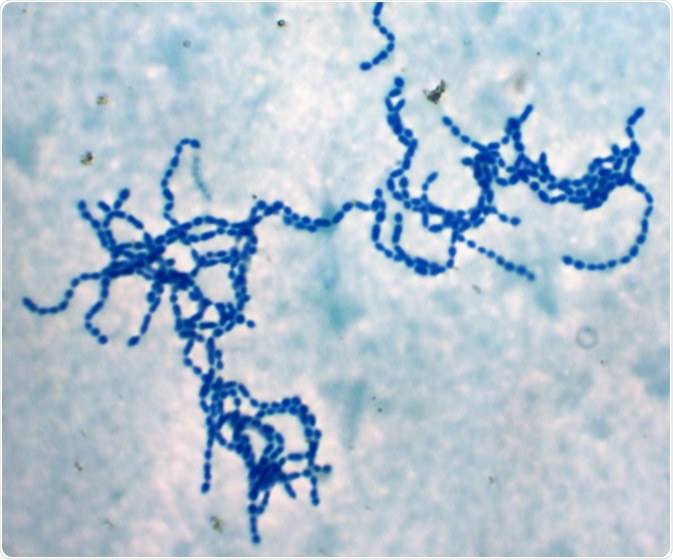Toxic shock syndrome is a potentially fatal illness associated with a broad inflammatory response to exposure to bacterial toxins, which are secreted by infective bacteria.
Staphylococcus aureus and streptococcus pyogenes are the bacteria most commonly found to be responsible for the infection. Menstruating women who are using tampons are the most likely population group to be affected and tampon use has been identified as a possible cause, although anyone can be affected by the condition.

Staphylococcus aureus - Image Credit: Tatiana Shepeleva / Shutterstock
The syndrome was first recorded in 1978 by James K. Todd, who was a pediatrician and noticed the link between seven children with similar symptoms affected by the staphylococcus aureus bacteria.
The incidence then rose, particularly for women using tampons regularly, until 1990s when it reached a plateau, thought to be due to increased awareness and prevention of the condition.
Symptoms
Many of the symptoms of toxic shock syndrome are common to the majority of severe infections and shock, which include:
- High fever and chills
- Vomiting and/or diarrhea
- Widespread reddening of skin (peeling of skin follows 1-2 weeks later)
- Muscle and joint aches
- Headache
- Sore throat
- Redness of eyes, mouth and throat
- Confusion
- Hypotension
- Photosensitivity
In severe cases, people suffering from this syndrome may faint or collapse and require immediate medical attention.
We Were There - Toxic Shock
Causes
Toxic shock syndrome occurs as a result of an infection with bacteria such as Staphylococcus aureus and Streptococcus pyogenes. These bacteria produce a toxin that leads to the symptoms associated with the condition.

Bacterial cells chains "Streptococcus pyogenes" (Photo from microscope, magnification x 1000). This rare strain have strong anticancer and immunostimulating activity and non-pathogenic - Image Credit: Dimarion / Shutterstock
Although it has not been established as a definitive cause, the use of tampons by menstruating women has been suggested as a possible cause, as this group of people are most commonly affected by the syndrome.
In addition, when greater awareness of appropriate tampons use became widespread, the incidence of women with the syndrome decreased significantly.
Other risk factors include recent childbirth, bacterial infection or surgery.
As a preventative method, women who use tampons should:
- Change tampons every four hours
- Unwrap tampons immediately before use.
- Wash their hands before and after inserting the tampon.
- Insert tampon with hands, rather than with an applicator.
- Avoid tampons and opt for sanitary napkins overnight.
Treatment
Anyone who is experiencing symptoms of toxic shock syndrome and suspects that they may be infected by the causative bacteria should seek medical attention as soon as possible.
If the individual is using a tampon at the onset of symptoms – or any other external body – it should be removed immediately, prior to any other methods of treatment. If there is a known infection site, such as following a surgical wound, the site should be drained to remove a large portion of the infectious material.
Antibiotics are usually indicated to eradicate the bacterial infection, which shortly result in a reduction of toxins and an easing of symptoms. Broad-spectrum antibiotics, such as cephalosporin and clindamycin drug classes are usually effective against the organisms that cause the infection and are administered via intravenous injection for near immediate results.
Additionally, intravenous fluids are often needed to increase blood volume and pressure, as well as to treat and associated dehydration. Blood pressure should be monitored regularly and managed accordingly.
It is also worthwhile to screen for health conditions that may arise as a result of the syndrome, for example renal failure. If severe kidney problems are present, there may be a benefit in dialysis.
References
Further Reading